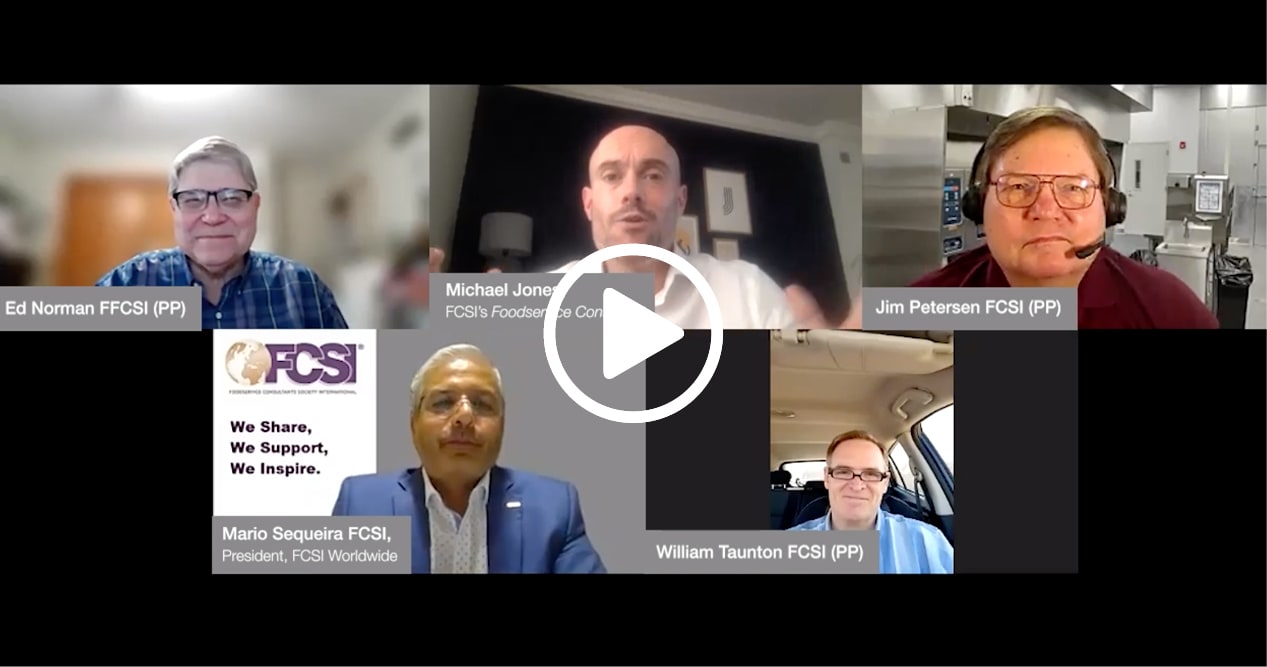
Disruption – in this case the replacement of the known with an unknown that renders the known redundant: a product; a business or even an Industry can be impacted by disruption can be for good or bad. The question raised by Don Montgomery of Vulcan at the recent FCSI Presidents’ Panel roundtable: “Disruption: can it be a good thing and effect positive change?”
An example of disruption having a negative impact outside our industry, is the fashion industry where the disruption of changes in fashion disrupts the supply chain and results in enormous global waste of material and resources, much of which ending up in landfill.
On the other hand the disruption of a dangerous product or activity through the development of an alternative safer solution is obviously a benefit. In some cases though, perfectly adequate and functional systems or equipment can be made redundant through the introduction of more efficient and effective facilities or systems. Maybe not to the extent that there is no market for the previous model but then puts a company out of business.
How to identify genuinely disruptive alternatives
The question for consultants and manufacturers alike is to identify genuinely disruptive alternatives that will completely replace and make redundant current systems or facilities or are they just another alternative or option or fad. Because, if an item of equipment using a particular technology can be replaced by an effective alternative, the consultant has to decide whether to stop specifying the system or equipment and the manufacturer has to decide if to discontinue the item from their production: (the former’s decision may well of course have an impact on the latter) or end up with a lot of unloved stock sitting on the shelf.
Back to the subject of fashion, the critical decision that has to be made by consultants as well as FCSI Allied members is: “Is this a real forever change, or is it a fad or fashion that will play out in the end?” In the case of equipment and facilities, for both sides it is a very difficult question to resolve because the foodservice back of house industry is notoriously slow to accept change. But maybe because of the general reluctance to embrace new or alternative technologies, and real change in the industry as a result being evolutionary rather than revolutionary, real disruption that destroys the market for a particular item or system is unlikely in our industry.
But; there is always a But: as pointed out by Jim Petersen FCSI (PP) sometimes regulations or external impacts such as environmental issues can have a disruptive impact. However these are easier to identify, although in the case of change in regulations, be different from area to area: country to country; and from a manufacturer’s perspective, may not have an immediate impact.
Clear benefits
However the question raised by Don Montgomery, asking if disruption can be a good thing, that answer in my view has to be yes, because disruption by definition indicates that the current is past it’s use-by-date and the market has permanently accepted the new. And why? Because of the clear benefits brought by the new: no longer an alternative: becomes a replacement of the old.
As an industry, foodservice and hospitality has to be by definition one of the broadest and most segmented of all industries. This means that disruptive technologies may impact one segment but not another.
The most vulnerable to disruption will be the large-scale production or volume segments where the multiplier effect of a small change can have a big impact on cost and therefore bottom line; whereas a small volume facility does not achieve the same ROI benefit from the potential for the change. This indicates that disruptive change will most probably be first adopted by those in high-volume operations and therefore impact the manufacturers supplying the industry segment. The benefits that disrupt the high-volume segment will then filter down to other segments and the change be evolutionary rather than disruptive; giving all those involved time to adapt.
In real terms there have been very few disruptive technologies or systems in the foodservice and hospitality industry. Slow adaption to change is the way of the industry and those attempting to introduce change frequently experience considerable resistance. This may in fact be a good thing because it forces the consultant as change agent to effectively explain or justify the benefits which in turn effectively tests the validity of the proposal. But equally often in vain, because of intrenched views of those who are never for changing.
All this adds up to the fact that disruption when it does happen will generally be a good thing. After over 40 years in the business my thought is that the only real disruptive change that caused the complete elimination of an item in general use, was the introduction of the Gastro-norm Standard food pan sizes in October 1969. This made all other different dimensioned food pan or steam table pan sizes out of date and in some cases manufacturers of those alternatives out of business. The benefits anticipated at its inception and continuing to this day can be seen in the development of multipurpose equipment such as the Combi oven which would have had far less potential if operators were all using different food pan sizes.
That’s the impact of real disruption: all other technological changes have been the development of alternatives or adaptions, not replacement technologies. Real disruptive change – when it actually happens: Bring it on.
Tim Smallwood FFCSI
